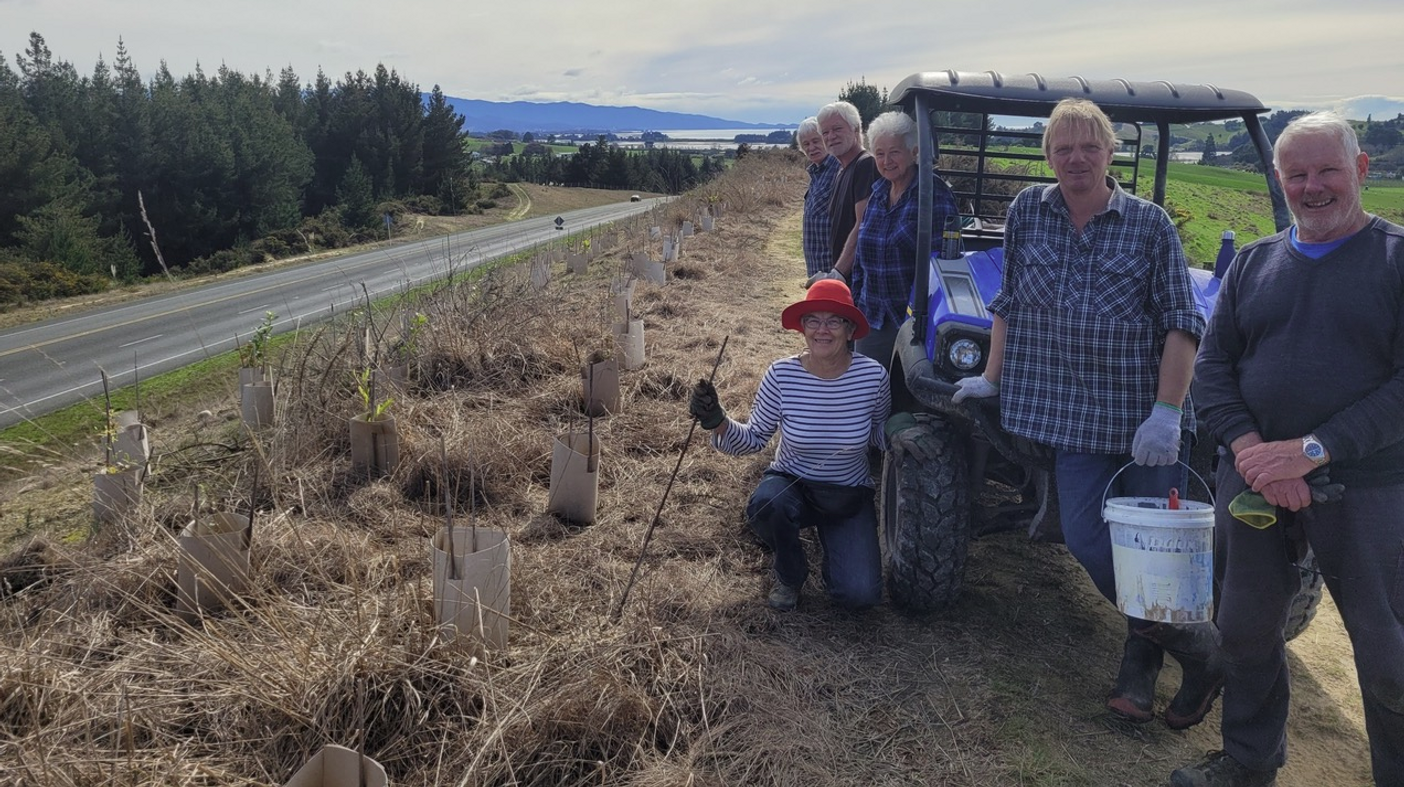Te Mamaku Native Corridor Planting Project

Forming a native, green corridor
-> Linking the Moutere Inlet and Waimea Estuary <-
A 10km long green corridor along SH60 between Tasman Village and Mapua, the so-called "Te Mamaku Drive", formerly the Ruby Bypass; that's the ambitious project of some local Tasman folk.
The project comes with access for the non-motorised public like walkers, runners, cyclists and horse riders. A stretch of unused, mostly public land on the eastern side of SH60 is visibly overgrown with gorse, broom, wattles and wilding pine trees. It already accommodates part of the"Dicker Ridge Walking Track" and continues on Stagecoach Road down to Chaytor Road and the Mapua's Dominion Flats.
The "Te Mamaku Native Corridor Project", formally driven by TACA (Tasman Area Community Association), now sits under the umbrella of the Tasman Environmental Trust (TET). It plans to connect the Waimea Estuary and Moutere Inlet with mainly native bush and trees. This would beautify the area alongside the Coastal Highway (SH60), as has recently happened with many highways in other parts of the country, reduce the fire risk and provide a native corridor for birds and insects to move between the estuaries and nearby wetlands.
A plan has been drawn up for the whole length of the corridor, with identified priority blocks to start with and to seek appropriate funding. This is a long term project to run over years, if not several decades!
What started in early 2022 with this simple idea has led to the first planting in winter 2022 of 1,800 trees done on 500 metres at the start of the project at the Tasman end. Thanks to the great support and funding of TET (Tasman Environmental Trust) and Restoring the Moutere through the Billion trees programme, people were able to envisage the direction in which the project was heading.
The winter planting season 2023 has seen the planting of a massive 12,000+ plants on Blocks 1 & 2. 140+ big wilding pine trees had been felled, about 3 hectares of land been mulched and sprayed in October 2022 to prepare the site for this planting. While most of the planting itself had been done by contractors, 750+ volunteer hours went into putting plant guards on in several working bees with our group of dedicated volunteers.
You may like to take a look at our drone flyover of the whole of Blocks 1 & 2, showing all of the wonderful work completed by our planters and volunteers:
https://www.youtube.com/watch?v=pOatf-j1wWA
Read our full project document here.
We were thrilled also to announce in May 2023 that our project was selected as the chosen Nelson/Tasman project for the He Rā Rākau Tītapu – King Charles III Coronation Plantings, the New Zealand Government's official gift to celebrate the coronation of King Charles III. Our share of 7,000 trees from the He Rā Rākau Tītapu Fund will mean 1,200 trees had been planted in Block 2 this July and over 9,300 trees in 2024 in Block 3 and Block 5.
Volunteers needed for Te Mamaku winter planting season 2024
10,000+ trees will be planted in the next six to eight weeks with several working bees. This year's planting is made possible through our repeat funders Lottery Environment and Heritage, Rātā Foundation, NBS Nelson Building Society, He Rā Rākau Tītapu – King Charles III Coronation Plantings (through Trees That Count & DOC), NZMCA (New Zealand Motor and Caravan Ass), Fulton Hogan, TDC, Network Tasman, Westbank Nursery and individual donors. And not to forget our Volunteers!
Anybody interested in supporting the project with donations or volunteer work visit: http://tinyurl.com/26tznt89
To receive regular updates please email Michael Markert at michamarkertnz@gmail.com
You may also wish to join our dedicated Te Mamaku project Facebook page, https://www.facebook.com/groups/282444301037489
To go to our donation page, click here. Look for our Te Mamaku Native Corridor project on this drop-down (at the bottom of the list) on the left-hand side of the page,


































